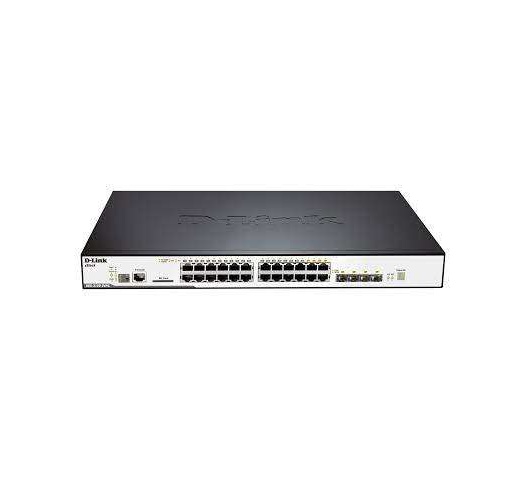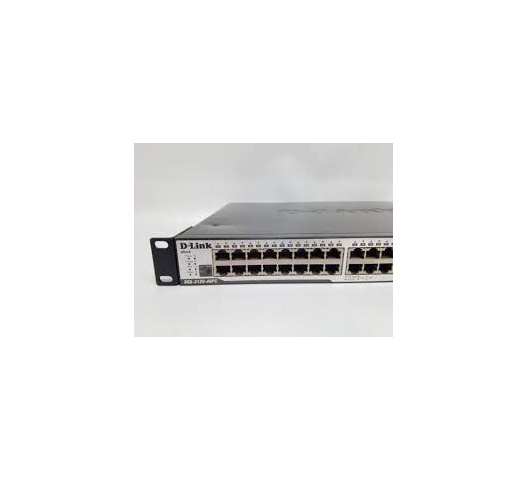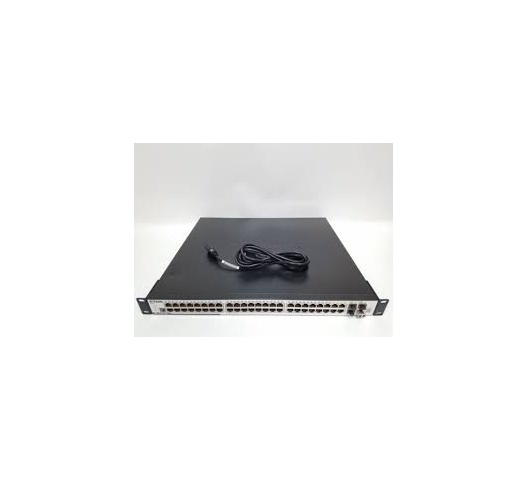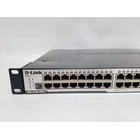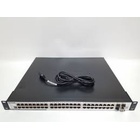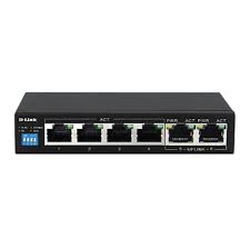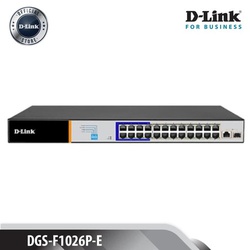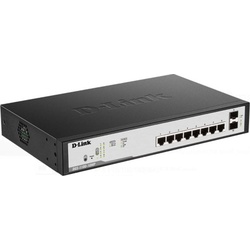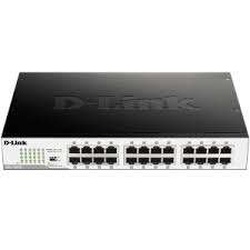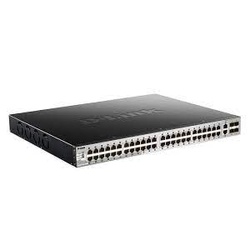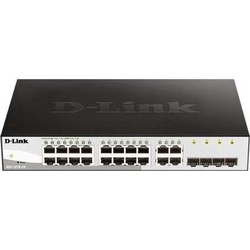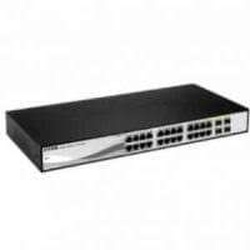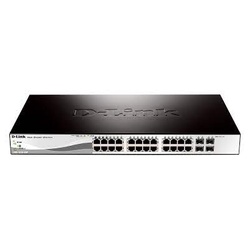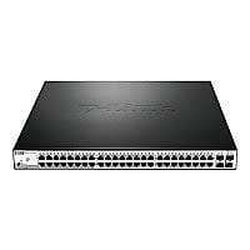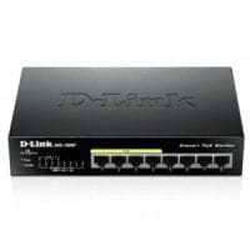D-Link DGS-3120-24PC xStack L3 Managed Gigabit Switch
by D-link
- Model: D-Link DGS-3120-24PC
- Series: xStack
- Form Factor: 1U Rackmount
- Switching Capacity: 88 Gbps
- Forwarding Rate: 65.48 Mpps (million packets per second)
- Ports:
- 24 x 10/100/1000BASE-T PoE+ Ports
- 4 x Combo 1000BASE-T/SFP Ports
- PoE Support:
- PoE Standard: IEEE 802.3af (PoE) / 802.3at (PoE+)
- Power Budget: 370W
- Max PoE Power per Port: Up to 30W
- Transmission Method: Store-and-forward
- MAC Address Table: 16K entries
- Jumbo Frame Support: Up to 13,000 bytes
- Flash Memory: 32 MB
- Packet Buffer: 2 MB
- VLAN Support:
- 4,096 VLAN groups
- VLAN Types: Port-based, 802.1Q, Voice VLAN, GVRP (GARP VLAN Registration Protocol)
- L2 Features:
- Spanning Tree Protocol (STP): 802.1D, 802.1w, 802.1s
- Link Aggregation: 802.3ad (LACP), up to 32 groups, 8 ports per group
- Loopback Detection, IGMP Snooping, MLD Snooping
- Ethernet Ring Protection Switching (ERPS) for network redundancy
| Model Number | DGS-3120-24PC |
|---|---|
| SKU | 21180 |
Reviews
Description
D-Link DGS-3120-24PC xStack L3 Managed Gigabit Switch
The D-Link DGS-3120-24PC xStack L3 Managed Gigabit Switch is a versatile and high-performance network solution designed for businesses that require robust Layer 3 capabilities, reliable PoE+ support, and advanced security features. This 24-port switch includes 24 10/100/1000BASE-T PoE+ ports and 4 combo 1000BASE-T/SFP ports, providing flexibility for connecting both wired and fiber-based network devices. With IEEE 802.3af/at compliance, it delivers up to 30W of power per port, making it ideal for powering IP cameras, VoIP phones, and wireless access points with a total PoE power budget of 370W.
The switching capacity of 88 Gbps and forwarding rate of 65.48 Mpps ensure efficient data handling, allowing seamless performance for high-bandwidth applications and environments with heavy traffic. It supports Jumbo Frames up to 13,000 bytes, enhancing performance when dealing with large data transfers. With 16K MAC address entries and a 2 MB packet buffer, it effectively manages network traffic and minimizes latency for a smooth user experience.
The DGS-3120-24PC stands out with its Layer 3 routing capabilities, supporting IPv4/IPv6 static routing, RIP/RIPng, and VRRP for creating redundant network paths, enhancing network resilience. It allows businesses to create scalable and efficient routing environments, ideal for larger networks with multiple subnets and complex routing requirements. Additionally, it provides 256 IPv4 static routes and 128 IPv6 static routes, offering flexibility in configuring network traffic paths.
For advanced network management, this switch includes Spanning Tree Protocol (STP), Link Aggregation Control Protocol (LACP), and Ethernet Ring Protection Switching (ERPS), providing network redundancy and load balancing to ensure uninterrupted operation. Quality of Service (QoS) features include 8 hardware queues per port, traffic shaping, and bandwidth control, allowing for prioritization of critical traffic like video conferencing and voice data, which ensures smoother communication across the network.
Security is a major focus of the DGS-3120-24PC, with features such as port security, IP-MAC-Port Binding (IMPB), ARP spoofing prevention, and Access Control Lists (ACL) to help prevent unauthorized access and protect sensitive data. The D-Link Safeguard Engine and DoS attack prevention further bolster network security, making it ideal for environments where data protection is a priority.
The switch is designed for ease of management, supporting a web-based GUI, Command Line Interface (CLI), SNMP v1/v2c/v3, and RMON. It also includes support for D-View Network Management System (NMS) and sFlow, making it easier to monitor network traffic and device performance. Dual image and configuration file support provide additional convenience and reliability, reducing downtime during updates.

